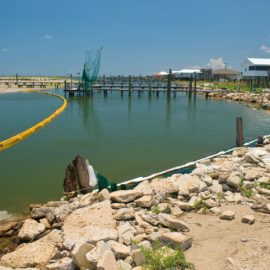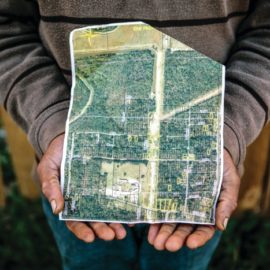
(Google Earth) Google Earth image
St Bernard Parish has been cited by the EPA for excessive sulfur dioxide readings. Thank industry.
The federal Environmental Protection Agency has declared St. Bernard Parish to be out of compliance with federal rules governing air emissions of sulfur dioxide, based on the failure of a Chalmette plant to get new emission reduction equipment operating properly by an October 2018 legal deadline. The EPA ruling followed comments submitted by a number of St. Bernard and New Orleans area residents who said sulfur dioxide emissions were causing health problems, including asthma attacks, and were a repeated odor problem. The company, Rain CII Carbon LLC, heats petroleum coke — a waste product from oil refining — to remove sulfur dioxide and other hazardous chemicals and turn the remaining material into carbon-rich fuels.
nola.com
This is not the first time as in 2018 the company did upgrade their emissions controls.
After the parish was determined to be out of compliance in 2013, a series of settlements of enforcement actions by the state Department of Environmental Quality resulted in Rain CII dramatically upgrading its emissions control equipment by August 2018. But between the time the new equipment was installed and an Oct. 5, 2018, legal deadline for the state to show the parish’s emissions were in line with federal standards, Rain’s equipment repeatedly broke down, resulting in the plant failing to meet the federal one-hour standard for sulfur dioxide emissions, which is 75 parts per billion, at one off-site monitor at minimum. In announcing its decision on Oct. 5 in the Federal Register, EPA said DEQ would have three years to show that Rain CII emissions are now under the federal limits, and that including its emissions, the parish’s total sulfur dioxide emissions meet the hourly and annual emission limits.
The EPA dismissed much the companies offered for getting off the hook and required a number of actions.
As part of its ruling, EPA dismissed a number of arguments made by Rain CII, DEQ, the nearby Valero and Chalmette refineries, and the Louisiana Chemical Association and Louisiana Mid-Continent Oil and Gas Association: While the company’s total annual emissions of sulfur dioxide had met federal standards, it was still out of compliance with the one-hour standard at one or more monitoring locations, While reductions in emissions by Valero and Chalmette — and minor reductions in emissions from motor vehicles — helped reduce annual emission totals in the parish, they didn’t eliminate the hourly emission violations And though hourly emission limits at two air monitors near the Rain CII facility did not violate the hourly limit, emission rates at another monitor were too high, throwing the parish into non-compliance.
DEQ saind Rain has done new emission checks and that they should receive them soon.
A spokesman for the state Department of Environmental Quality said that Rain CII conducted a new test of emissions in September and expects the results to be forwarded to the state in November. “After we get the results, we’ll probably submit another attainment demonstration” to EPA, said spokesman Greg Langley, which could result in the parish being in compliance. He said that based on positive results from that test, the state does not expect to require additional emission reductions by the company. Rain CII declined a request for comments on the EPA action. A review of quarterly emission reports to DEQ indicate that the company met the federal emission standards during the first two quarters of 2022, but reported additional problems with emissions equipment on several days during the fourth quarter of 2021. EPA officials said its finding could not yet address residents’ separate complaints about a plan to build a new Port of New Orleans ocean-going vessel terminal in St. Bernard, since the project is still only in the planning stage. Critics of the port said ships stopping at the port would increase the area’s sulfur dioxide emissions.
Because of the request for the shipping port the EPA is doing a more extensive review.
The ruling pointed out that while the new port plan has received some permits from the Army Corps of Engineers, the Corps is conducting a comprehensive environmental review of the project that “must also identify actions to minimize negative impacts and evaluate alternatives to the proposed project that could serve the same purpose.” It said the Corps will ask for public comment on what impacts should be studied as part of the environmental study during scoping meetings tentatively scheduled to begin by the end of the month. It said EPA will participate in that scoping process.
The high cost of “jobs” but it seems the EPA is taking a harder look at Louisiana. Will the DEQ decide to be environmental rather than pro-industry?



